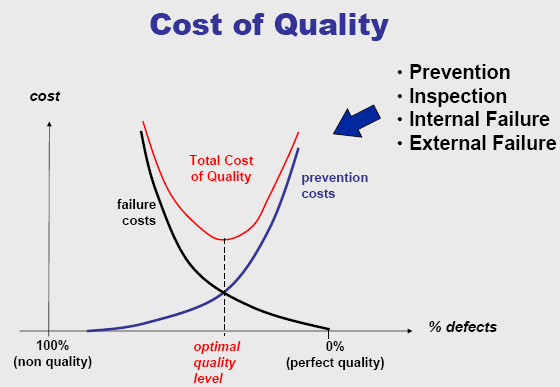
It's critical to assess the first-time quality performance of oil and gas vendors to encourage them to deliver 100% defect-free work. Vendors should not be expected to provide anything less than what is required, but they often do.
The issue lies with certain vendors in the oil and gas industry, particularly those dealing with vendor oil and gas, drill pipe, and complete systems. These vendors expect you to discern the good from the bad, placing the responsibility on your shoulders. Consequently, if no action is taken, they will perpetuate the status quo, leading to avoidable failures and downtime that you will endure.
Often, they will tell you that defining quality is difficult – and that measuring it and addressing quality performance is not an exact science. The opposite is, in fact, true. Below is a five-step roadmap to help oil and gas industry managers measure quality.
Step 1: Define Quality
First, oil and gas industry managers must define quality. They should focus on defining what they mean by "quality" in terms of:
- The guidelines or standards that govern performance
- An analysis of key stakeholders' expectations
- A list of nonconformances (defects) as documented during inspections performed at each vendor location
- Quality metrics such as first-time pass rates for deliverables
- The cost of quality (COQ). Many of the costs of quality are hard to detect and identify via conventional COQ measurement systems. Many of these expenditures, if identified, would be regarded as the cost of doing business. Examples include reputational harm costs, financial losses due to downtime and accidents, and consumer dissatisfaction costs.

(Image source: researchgate.com)
Quality is conformance to specifications. In oil and gas industry, we are fortunate to have robust industry standards. First-time quality is a quality management approach that focuses on meeting specifications without errors or deficiencies.
Step 2: Create Checklists
For comprehensive inspections, precise quality inspection checklists should be created, tailored to the tools or equipment being examined. These checklists must incorporate checkpoints for known and recurring issues, including ball valves and alloy steel. Following these checklists in the field allows oil and gas inspectors to systematically address any problems encountered.
Step3: Collect Deficiency Data During Inspections
Quality evaluations during inspections involve assessing compliance in the areas of gas oil, drilling tools, and gas exploration. Inspections are conducted using checklists to ensure thoroughness. It is important to document any checks that were performed correctly on the first attempt, as well as any flaws, regardless of whether they are checkpoints. Furthermore, deficiencies should be noted, even if they are not designated as checkpoints.
To measure quality performance, checkpoints must have separate Fixed and Open checkboxes that provide data for assessing quality – simply stating “Yes/No” loses sight of the fact that there may have been issues when “Yes” is changed to “No”.
Step 4: Calculate First-time Quality Performance
Calculating first-time quality performance will provide oil and gas managers with an accurate measure of their vendors' overall oil and gas equipment compliance. First-time quality performance is the percentage of unqualified inspections that are found to be compliant after inspection, including those where work was performed immediately following inspection instructions.
The higher the percentage, the higher the quality. The objective is always 100%.
Pass first time = quality.
Pass the second time after corrective actions = 2nd-time quality.
FTQ% = FTQ inspected items/all inspected items.
On large systems FTQ = #FTQ checkpoints/All checkpoints.
Many businesses rely on spreadsheets to gather information, but construction quality management software lets you use the data in a way that Excel cannot. A QMS that is database-driven generates calculations as a free by-product. During the routine inspection process, all essential data is recorded.
Step 5: Quality Performance Carrots and Sticks
As mentioned above, in the oil and gas sector - many oil and gas vendors believe it is your duty to separate the wheat from the chaff. It is therefore important to attach rewards and consequences to first-time quality performance to change vendor behaviors. We recommend a few ways to do this:
- Communicate measures to vendors: At quarterly meetings, oil and gas quality managers should share their oil and gas compliance results with vendors.
- Reward top performers: Oil and gas stores that meet or exceed oil and gas performance standards may receive tangible benefits such as lower prices on equipment and greater access to services.
- Reinforce good performance: Assign work to good vendors and let them know the quality was essential for the evaluation process.
- Penalize poor performers: Oil and gas companies can provide oilfield services at a reduced cost to vendors that meet or exceed compliance standards.
- Don't assign work to bad performers: Show details from inspection reports. Help them get better if they are interested.
- Track performance trends: An oil and gas vendor with a good performance trajectory will achieve better quality than the bare minimum quality standards.
Oil and Gas Vendor Guide
FTQ360 oil and gas quality management software is a cost-effective way to attain first-time quality. It provides oil and gas vendors with the necessary tools to conduct inspections and tests, keeps their teams accountable, and achieves the highest operational quality standards. It comes with checklists designed for project management to collect necessary data. In addition, FTQ360 offers automated reporting of vendor performance on inspection reports, dashboards, and trend reports for clients, buyers and suppliers across Oil and Gas and other industries.
For more information on how you can reduce your inspection burden, focus on critical systems, eliminate unnecessary tasks, and attain first-time quality, download the FTQ360 oil and gas guide to digitizing your inspections.
![[DOWNLOAD THIS GUIDE TODAY] HOW INSPECTION APPS ARE DRIVING DIGITAL TRANSFORMATION IN THE OIL & GAS INDUSTRY](https://no-cache.hubspot.com/cta/default/3353989/8b58e27f-154e-49a2-beaa-d972aede0717.png)
